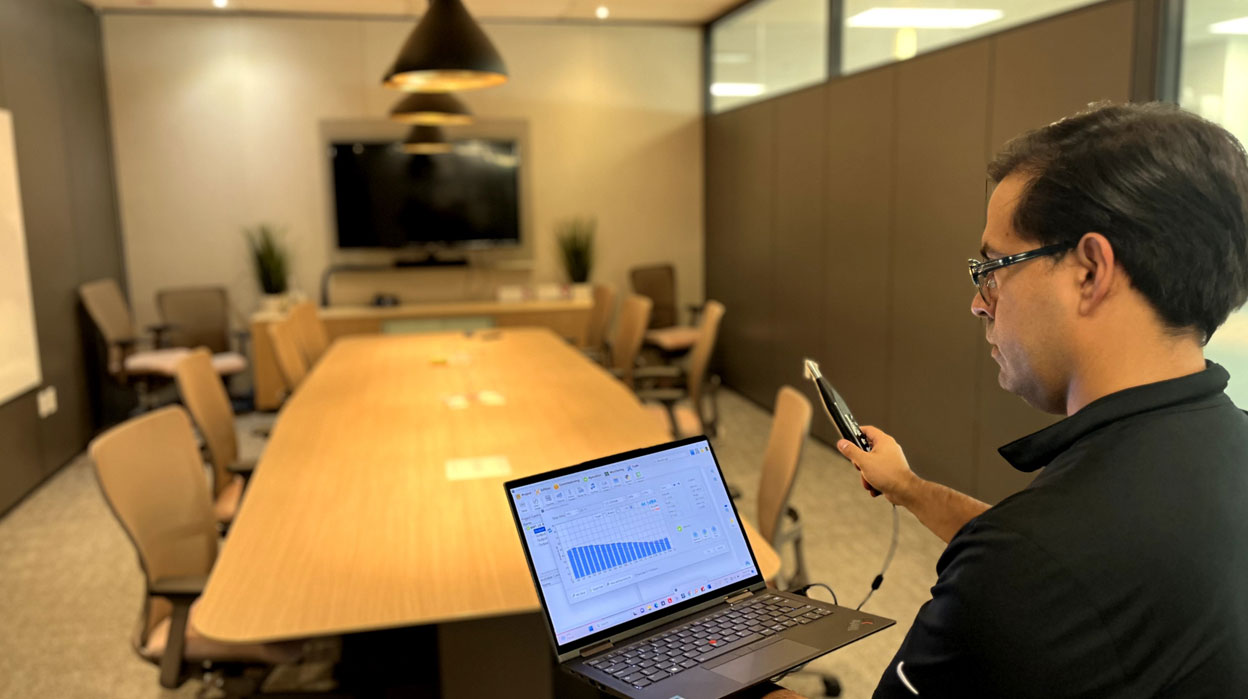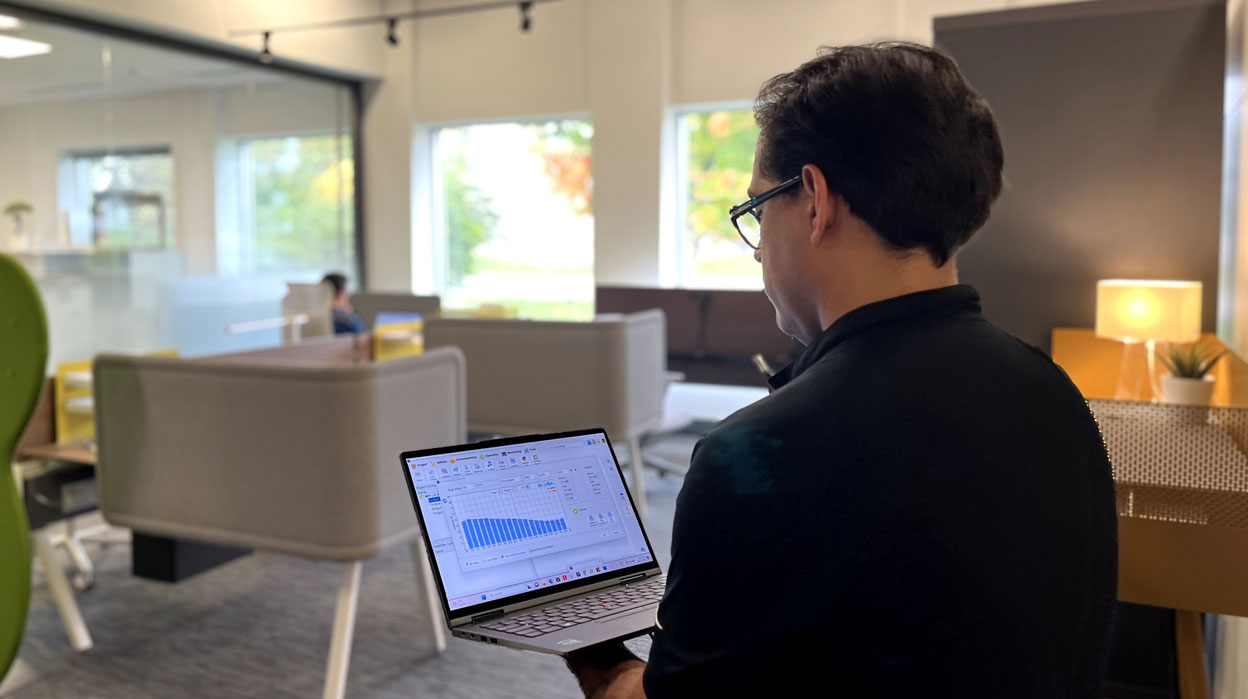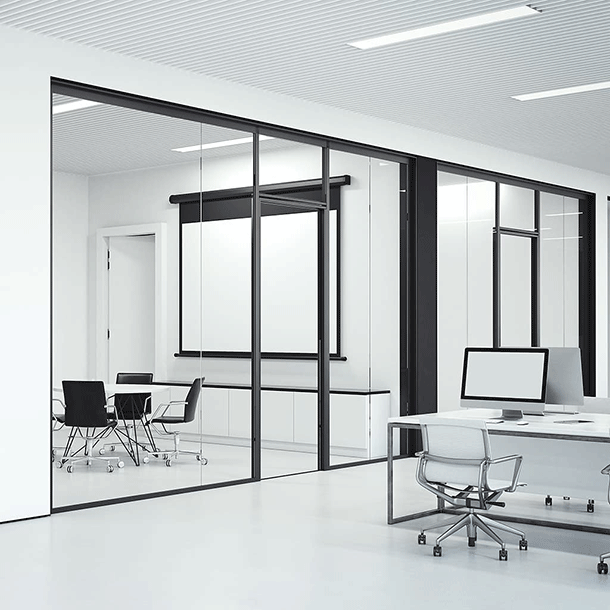In the ever-evolving landscape of office design, achieving the optimal balance of decibels (dBA) is crucial for creating a workspace that promotes comfort, privacy, and productivity. The right dBA levels in an office space significantly impact the well-being and efficiency of employees. In this blog, we'll explore the art of crafting the ideal acoustic environment for your workspace, and how sound masking can play a pivotal role in achieving the right decibel levels in different types of rooms.
Understanding the Common Office Spaces
Effective office design is a multifaceted process that considers the various areas within the workspace, each with its own ideal dBA range:
1. Meeting Rooms: These are spaces where crucial discussions, presentations, and brainstorming sessions take place. Meeting rooms should have low BG noise. 40 dBA to 42 dBA. Especially if they have videoconference for the best sound.
2. Closed Offices: For individual work or confidential meetings, closed offices require a higher degree of soundproofing to maintain privacy and minimize disruptions. The ideal dBA range here is approximately 40-45 dBA. (Photos courtesy of Zynga Offices and M Moser Associates)
3. Entrance: The entrance serves as a transition space and should have controlled acoustics with dB levels around 45-50 dBA, welcoming but not overly loud. (Photos courtesy of Financeit and Clearsapce)
4. Open Spaces: These areas promote collaboration and communication but can quickly become noisy. Balancing openness with controlled acoustics typically means aiming for 42-48 dBA, depending on the specific office culture and layout.
5. Common Areas: Cafeterias, lounges, and breakout spaces are essential for relaxation and socialization. These areas require a balance between vibrancy and peace, with dBA levels ideally ranging from 48-50 dBA.

The Importance of Acoustics in Office Design
Poor office acoustics can lead to decreased productivity, increased stress, and reduced job satisfaction. Office managers and facility managers need to address decibel levels as an integral part of office design. Here's why:
Comfort: Comfortable dBA levels minimize distractions and reduce stress, leading to a more content workforce.
Privacy: Sensitive conversations and focused work require a degree of privacy, which can be compromised by excessive noise.
Productivity: The right acoustic conditions foster concentration, creativity, and efficient collaboration.
Creating optimal acoustics in an office space involves considering various factors and materials. Elements like sound-absorbing panels, acoustic ceiling tiles, and properly placed furniture all play a vital role. However, among these options, sound masking stands out as the most cost-efficient solution. This technology utilizes engineered background sound to mask and absorb distracting noises, enhancing privacy and regulating decibel levels, making it an effective and economical choice for achieving ideal office acoustics.
Furthermore, sound masking can be customized to different areas within the office, ensuring that the ideal dBA levels are maintained in each space. For example:
Meeting Rooms: Sound masking systems can be adjusted to provide a higher level of privacy within meeting rooms, preventing confidential conversations from spilling over while maintaining the recommended dBA levels.
Open Spaces: In open office spaces, sound masking can help regulate decibel levels and reduce the intelligibility of conversations, preventing distractions while maintaining a collaborative atmosphere.
Calibrating Your Sound Masking System

Embark on a sonic journey with Soft dB. In this insightful YouTube video, our skilled sound masking experts guide you through the crucial process of calibrating your system for optimal acoustic bliss.
Proper calibration of sound masking systems is essential to achieve the right balance of dBA levels within your office space. This involves adjusting the volume and frequency of the emitted sound to match the unique acoustics of your workspace. This calibration process ensures that sound masking effectively conceals speech and other noises without becoming obtrusive or irritating, thereby maintaining the ideal dBA levels. Furthermore, Soft dB's Adaptive Volume system adjusts the level of sound masking based on its sensors, which continuously adapt to the ambient noise in the room. This process is subtle and gradual to ensure that it remains imperceptible to the employees in the room.
In conclusion, office managers and facility managers should prioritize office acoustics and dBA levels as a fundamental aspects of office design. Achieving the right amount of noise in different spaces, as measured in decibels, can have a profound impact on comfort, privacy, and productivity. Sound masking systems offer a powerful tool to create the perfect acoustic environment, provided they are skillfully calibrated to suit your specific needs. Striking the right balance between decibel levels is the key to a harmonious and productive workspace.







